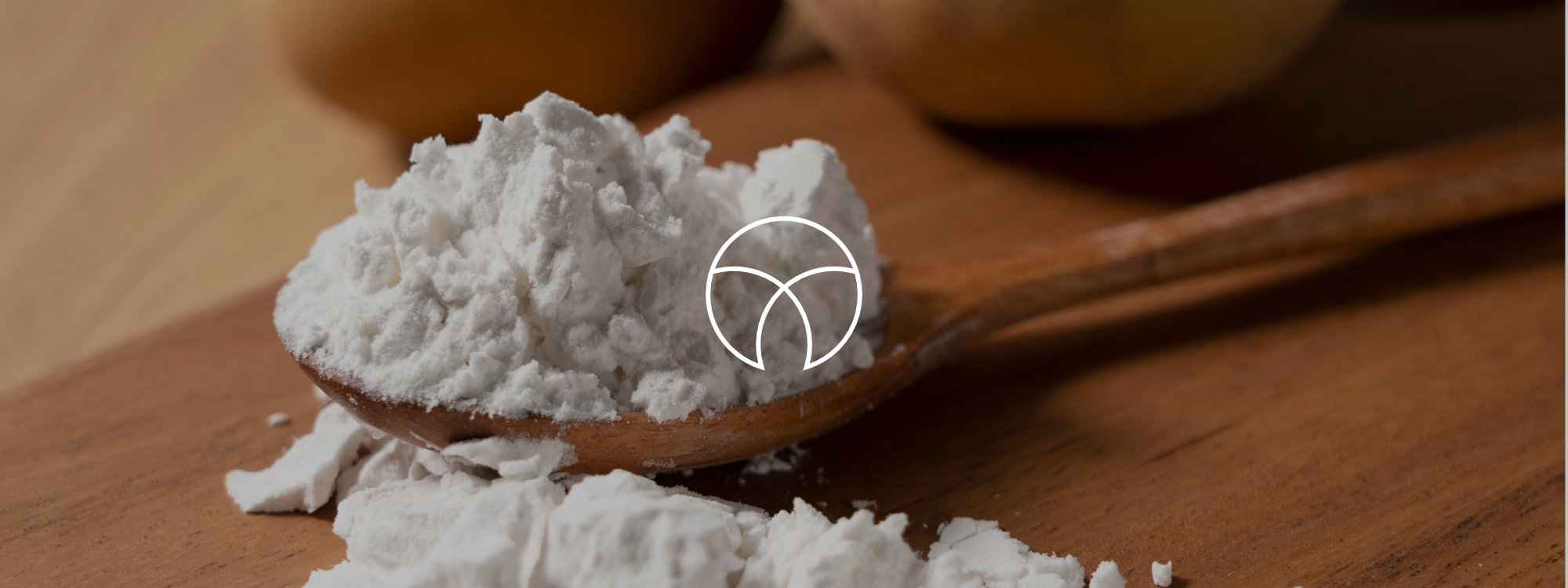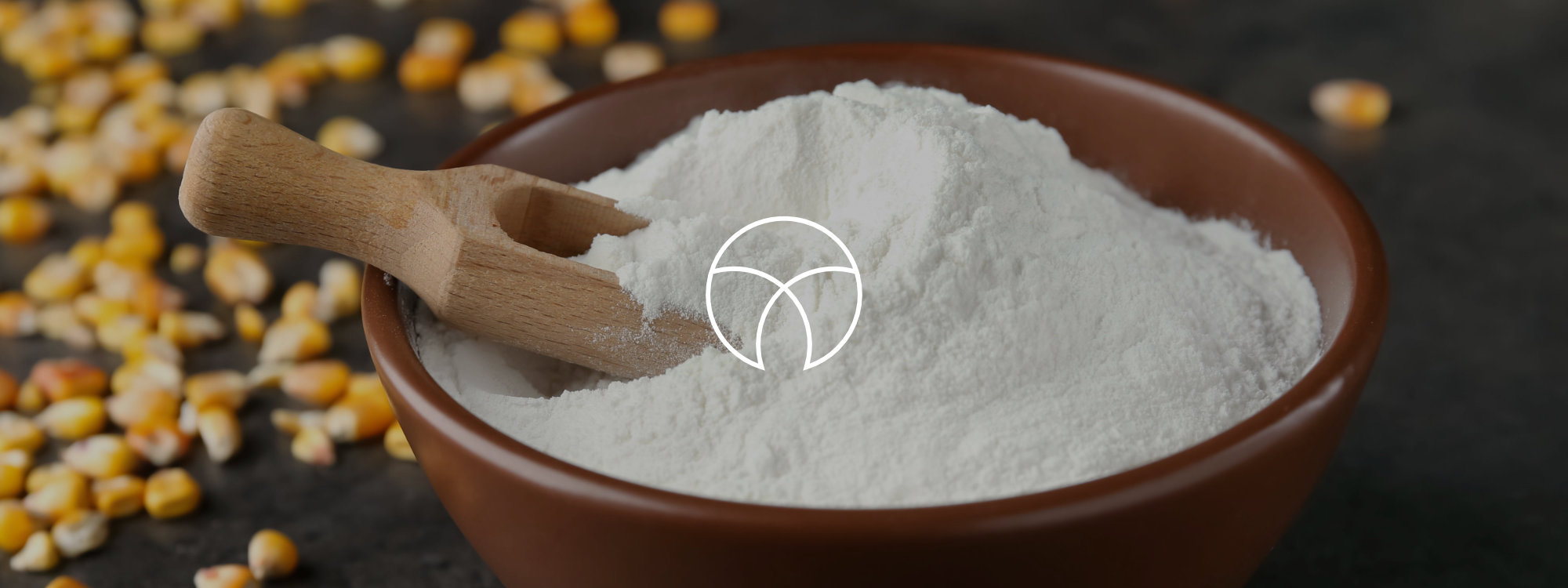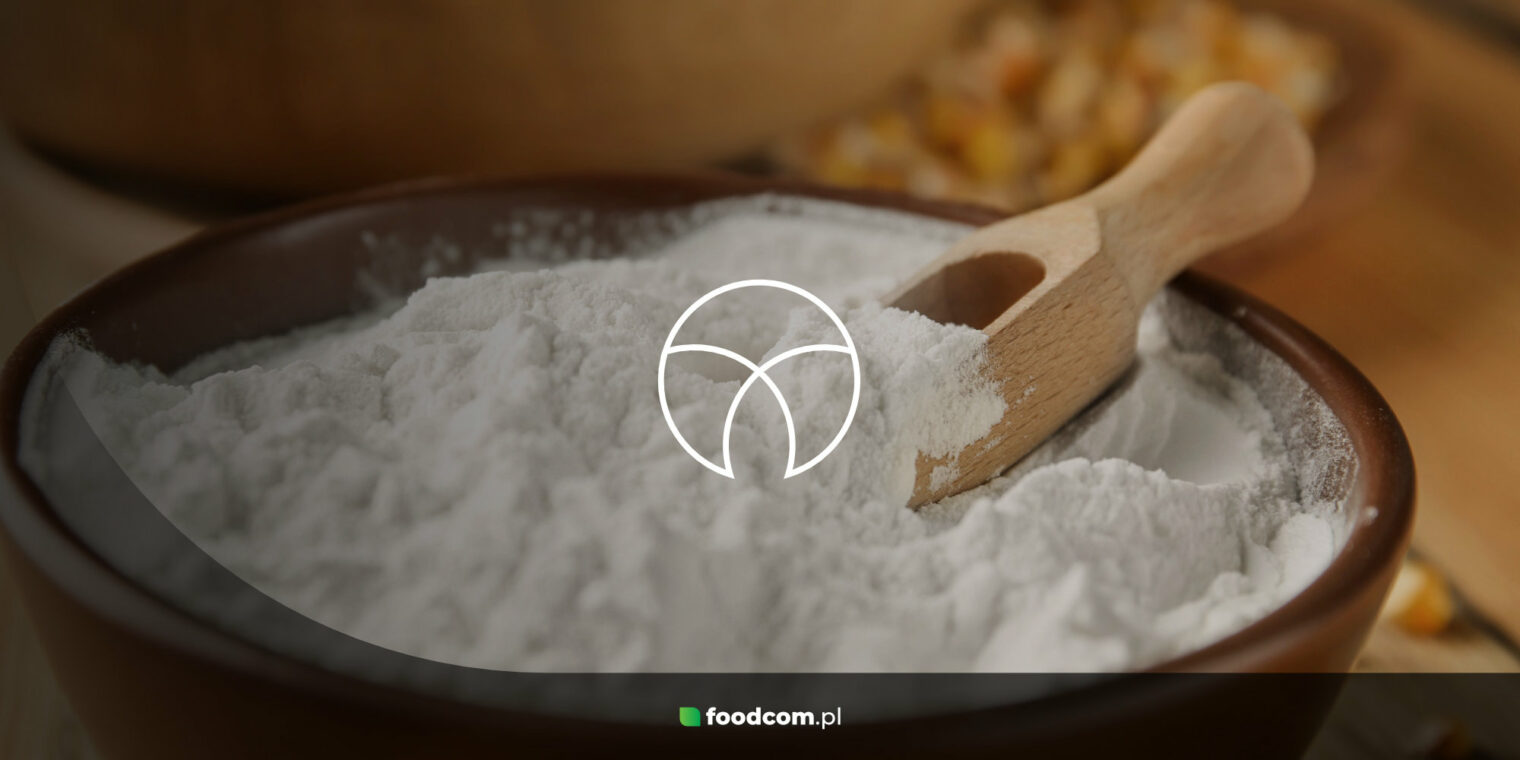- Potato Starch is a substance that occurs naturally in potatoes.
- It is mainly used in the food industry and as an additive in animal feed.
- Corn Starch, is obtained from the endosperm of maize.
- It is a gluten-free product, is in powder form and is white in colour.
- Corn starch is an important ingredient not only in the food industry, but also in the paper and glue industry.
Everything you need to know about starches
Potato starch and corn starch are two of the most popular starches in the industry thanks to their versatile use and availability. They are popular ingredients in soups, sauces and puddings, and more, due to their ability to provide thickness and texture stability to the final product. While there are many starches, not all of them work interchangeably.
Read our guide on starches and find out which products can benefit your business!
What is potato starch?
Potato starch is a starch extracted from potatoes. For the production of potato starch, many species of potatoes are grown, with potato varieties with high starch content and yield being selected. Isolating starch from the potato involves crushing the potatoes and releasing the starch grains from damaged cells in the root tubers. The starch is then left to settle in solution or separated using hydrocyclones.
The final product is a powder with a distinct white color. It is suitable for all consumer groups, including vegetarians, vegans and people with celiac disease.
The cooked starch shows typical characteristics: neutral taste and good transparency, good binding power, no foaming and no yellowing of the final product.
What is the use of potato starch?
Potato starch is mainly used in the food industry. It can be found in pasta, stir-fries, sausages, bread creams, soups, prepared sauces, sponge cakes and even in the production of packaged cheese. It is a valued ingredient in Asian cuisine, where it is used to thicken sauces. Potato starch is best added at the end of cooking, as it is susceptible to very high temperatures, allowing it to activate its binding properties when warm.
Starch is also used in various gluten-free products – for example, as an ingredient in all-purpose gluten-free flour. It improves the texture and crunchiness of all cakes, cookies and baked goods in general.
The binding properties of potato starch are also used in industrial markets, such as in the production of wallpaper glue, textile adhesives, paper, paper bags and rubber bands. Interestingly, potato starch was also used in one of the first color photography processes, the Lumière Brothers’ Autochrome Lumière, until the advent of other color film processes.

Potato starch in pet food
Although native and modified starches are valuable both as a source of energy and for various physical functions, they are not widely used in pet food because most premixes already contain grains. Specialized feeds such as pet food and milk replacers are exceptions. Starch dissolves easily in cold water and often replaces lactose in milk replacers for calves. It is also used when protein and energy levels need to be adjusted separately when planning a diet for animals.
What is corn starch?
Corn starch consists of two polymers of glucose – amylose and amylopectin in different proportions depending on the type of corn. It is extracted from the endosperm, or part of the corn. The final product is a white, free-flowing, powdery substance with no discernible taste or odor. Corn starch can be chemically or physically modified, or not modified at all.
What is corn starch used for?
Used in cooking, it mainly serves as a thickener, without changing the taste of the product. It is most often added to soups, and can be found in many premixes. We also use it in confectionery products such as brownies, bread, cakes and cookies. Starch binds ingredients together, giving baked goods the right consistency.
When added to packaged products, corn starch absorbs moisture and condensation. This process helps prevent lumps and food spoilage. What’s more, a mixture of corn starch and water can replace egg in many baked goods, which is why it is often used in plant-based alternatives.
Corn starch works well for dairy-based recipes, but if a recipe contains a lot of sugar or is extremely acidic, corn starch may not be the best substitute. Acidic foods include tomatoes, canned fruits, juices and vinegar. Corn starch should also not be used in recipes that you plan to freeze, as it can cause the final product to become spongy when thawed.
Corn starch is also used in the paper, textile, cardboard and glue industries. In pharmaceutical and medical applications, corn starch is used, for example, as a lubricant for surgical gloves. It is widely used in the production of bioplastics and airbags. In cosmetics, it plays a role as a talc substitute in baby products.
Other uses include the livestock, poultry and fish feed sectors.
Corn starch – learn more!
Native Corn Starch offered by Foodcom is made from European corn and does not contain GMO. The process of corn starch production begins with the purification of the corn raw material, which is then ground using water. The gluten and starch are then separated and the slurry is dried for processing into powder.

Corn starch vs. corn flour – similarities and differences
A common mistake made by consumers is to confuse corn starch and corn flour. Recall what corn starch is: it is a loose, fine white powder with a neutral taste and smell, consisting of two polymers of glucose-amylose and amylopectin in different proportions depending on the type of corn. What distinguishes it from corn flour in the most basic way is that corn starch is extracted from the white stamens of corn, while corn flour is extracted from kernels isolated from the embryo. Of course, this is not the only feature by which the two products differ. Corn starch and corn flour differ because of their unique properties, including their individual nutritional content. In 100 grams of corn starch, the nutritional values are:
- Energy value: 350 kcal
- 4 g of protein
- 0 g of fat (including saturated fatty acids: 0.38 g)
- 5 g of carbohydrates
- 5 g of dietary fiber.
In 100 grams of corn flour, on the other hand, we find:
- Energy value: 351 kcal
- 2 g of protein
- 0 g fat (including saturated fatty acids: 0 g)
- 5 g of carbohydrates
- 7 g of dietary fiber.
Corn starch – use in the paper, medical and cosmetic industries
Corn starch, also known as mazein, is used not only in the food industry. It is also perfect for the medical, cosmetic or paper industry. In the medical field, modified corn starch is used to produce blood-clotting drugs. It is also an ingredient in some anti-inflammatory drugs.
Thanks to its properties, corn starch effectively absorbs oils, and is also an excellent carrier of essential oils. These unique characteristics make corn starch in cosmetics widely used. On a daily basis, we can find it as an ingredient in antiperspirants, bath balls, body salves and dry shampoos.
Corn starch is also a valued substance in the paper industry. It is used during paper production as one of the organic fillers. Potato starch also belongs to the same group.
Corn starch vs. potato starch: Which one is better?
Since both starches can be used in similar ways, in most cases they can be used interchangeably. However, there are some exceptions. Potato starch is best for thickening foods such as macaroni and cheese, while corn starch may be better for soups.
On the other hand, potato starch cannot withstand long cooking times and will not do well in long-cooked soups and sauces. When it comes to feed products, potato starch is a key ingredient in specialty pet food and milk replacers for calves, while corn starch can be found in water feed and premixes for livestock.
Regardless of the choice of starch, it is undoubtedly a valuable ingredient that can have beneficial properties in many industries. Foodcom offers native corn starch and native potato starch in 25 kg bags or in so-called Big Bags. Learn more about these products in our product section and discover how they can support your business!
Why Foodcom?
Our great sales support team will help our salespeople carry out contract and business transactions in a smooth and efficient manner to provide the best quality service to all our business partners. Our logistics team will take care of transportation, and our finance department will be responsible for all matters related to the financial part of the transaction. Don’t wait! Contact us.








